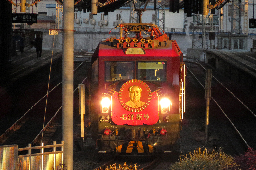You all do realize that suburbs existed before the invention of the car right? American infrastructure is bad but it’s not irredeemable, the assumption that we can’t provide public transportation to these places because of a lack of resources is malthusian. And sure some places like the American Southwest and Florida are legitimately over human population carrying capacity due to climate change but in general the earth as a whole isn’t, and cities like Amsterdam are just as unsustainable as Miami since even though has one of those le epic reddit notjustbikes cityskylines approved infrastructure, both are below the sea level.
I think in general our message should be abolish the need to own the automobile, any measures meant to limit car use should target the rich before the poor. And that trains are good, and that a high speed train across the United States would be a rather popular project in the eyes of even the chuds. And by god stop calling for the suburbs to be razed, stop trying to be zoomer Robert Moses.
yes bro, thinking that suburban sprawl is bad is totally malthusian.
We hate modern american suburbs because they’re antithetical to sensible public transportation and walkability. It would be ridiculous to specify every single time that we particularly mean the late 20th-21st century anti-grid subdivision layout method designed to be deliberately unwalkable, dependent on personal cars, and as prohibitive to public transit as possible for the explicit purpose of discouraging municipalities from implementing public transit into that area as a method of discriminating against the urban poor and minorities.

Check out these two different options for a suburb layout with identical lot size for the house plots. There is a huge difference between a sprawling suburb with awful layouts and one that’s sensibly designed. The winding goofy-ass layouts that modern suburbs take are inspired by Levittown’s design, but taken several steps further. That town was designed to be segregated, and the design was laid out specifically to prevent future city planners and governments from coming along and desegregating the town, using its layout as a method to make it inconvenient to connect to public transit, in order to prevent minorities from accessing the neighbourhood that way. These areas are specifically designed to be prohibitive for a municipality to connect with an effective public transit system. No sensible municipality is going to add random stops in your 50 total mile maze full of dead ends without turnarounds in order to service the maybe a dozen total users per day. No bus passenger is going to walk 5 miles through that maze to get to your house, and you don’t need the bus because you have a car. It’s a method of segregating your neighbourhood based on car ownership as an extrapolation of income level, as an extrapolation of race.
We don’t want to literally nuke the concept of a suburb out of existence and leave everyone there for dead, we want our neighbourhoods to be designed sensibly, instead of putting ourselves in a situation where your house is a two hour walk or a 15 minute drive away from your next-door neighbour.

That’s going to mean we need to actively change the designs of our suburbs and neighbourhoods, and that means the modern conception of an american suburb has to go. It’s not sensible to add potentially multiple miles of travel per single family residence to all of your transit routes, and it’s not about a lack of resources. Can you imagine a utopian, connected city where buses and trams are so bogged down by bad layouts that walking in a straight line across people’s lawns ends up being faster? Of course not.

